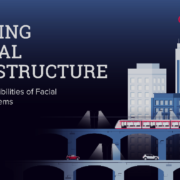A widespread outage at Amazon Web Services (AWS) on October 20th crippled major platforms including Snapchat, Fortnite, and Ring, exposing the internet’s deep reliance on a single cloud provider and raising questions about digital infrastructure resilience.
The disruption, which began in the early hours of the morning ET and lasted throughout the day, originated in AWS’s critical US-EAST-1 data center region in Northern Virginia, underscoring the systemic risk of concentrated cloud infrastructure.
RELATED: Internet outage strikes Sub-Saharan nations following undersea cable damage
From DNS Error to Digital Chaos: How a Single Glitch Crippled the Web
The root cause of the massive outage was a Domain Name System (DNS) error. DNS acts as the internet’s address book, directing user traffic to the correct websites and services. When AWS’s DNS services failed, it was akin to the internet losing its map—platforms like Reddit, Canva, and Lloyds Bank were still online, but users couldn’t be directed to them.
This “common kind of outage” caused disproportionate havoc, affecting everything from social media and gaming to banking and education, with tracking site Downdetector recording over three million problem reports in the U.S. alone.
The Domino Effect: A 15-Hour Ordeal for Businesses and Users
While AWS identified and fixed the initial technical fault within hours, the incident triggered a cascade of secondary issues that prolonged the disruption. The company worked throughout the day to fully stabilize its services, with all systems only returning to normal by 6 p.m. ET.
The impact was felt globally, highlighting AWS’s role as the backbone for an estimated one-third of the internet. The outage disrupted learning in schools that use the Canvas platform, halted financial transactions for major banks, and rendered popular apps and games inaccessible to millions.
A “Textbook” Case for Digital Diversification
Industry experts pointed to the outage as a “textbook illustration” of the risks inherent in the tech industry’s heavy reliance on a few dominant cloud providers. While competitors like Microsoft Azure and Google Cloud Platform exist, AWS remains the market leader by a significant margin.
The event has reignited debates in Europe and the UK about the urgent need to build sovereign cloud infrastructure to reduce dependency on U.S. tech giants. However, the immense scale and established dominance of existing providers present a significant barrier to entry, leaving many businesses with limited alternatives despite the clear risks.





























